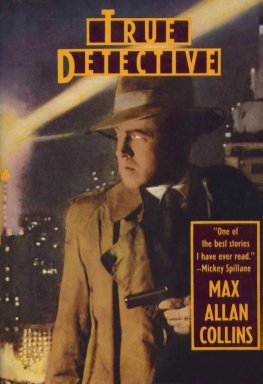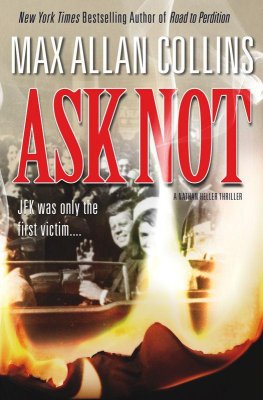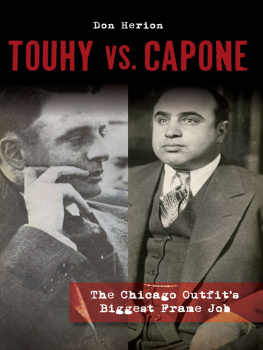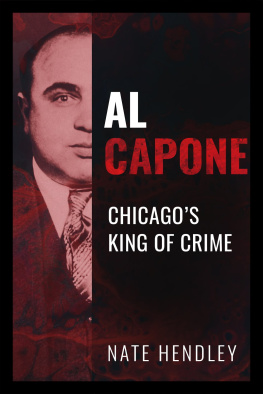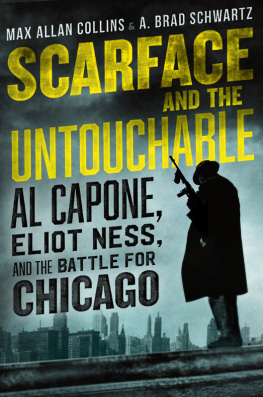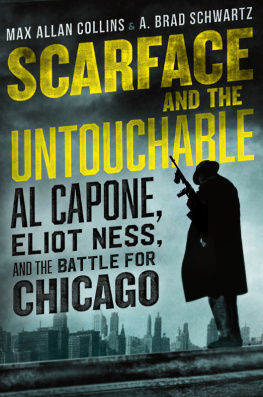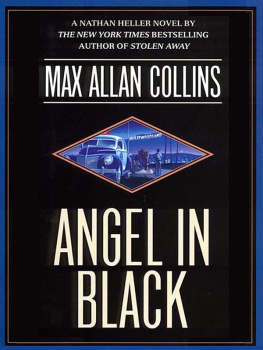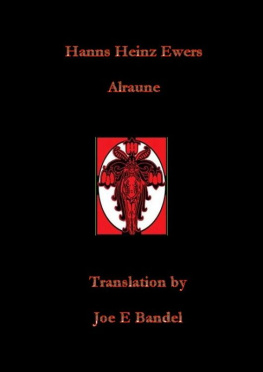True Detective
MAX ALLAN COLLINS has earned an unprecedented seven Private Eye Writers of America "Shamus" nominations for his "Nathan Heller" historical thrillers, winning twice (True Detective, 1983, and Stolen Away, 1991). Termed "mystery's Renaissance Man" (by Ed Hoch in The Best Mystery and Suspense Stories of 1993), Collins has created three celebrated contemporary suspense series: Nolan. Quarry and Mallory (thief, hitman, and mystery writer respectively). He has also written four widely praised historical thrillers about real-life "Untouchable" Eliot Ness, and is an accomplished writer of short fiction: "Louise," his contribution to the popular anthology Deadly Allies, was a Mystery Writers of America "Edgar" nominee for best short story of 1992. He scripted the internationally syndicated comic strip Dick Tracy from 1977 to 1993, and wrote three Tracy novels. Working as an independent filmmaker in his native Iowa, he wrote, directed and executive-produced Mommy, a suspense film starring Patty- McCormack, which aired on Lifetime cable in 1996; he performed the same duties for a sequel, Mommy's Day, released in 1997. The recipient of two Iowa Motion Picture Awards for screenwriting, he wrote The Expert, a 1995 HBO World Premiere film starring James Brolin. A longtime rock musician, he has in recent years recorded and performed with two bands: Seduction of the Innocent in California, and Crusin in his native Muscatine, Iowa, where Collins lives with his wife, writer Barbara Collins, and their son, Nathan.
MYSTERIES
Published by ibooks, inc.:
NATHAN HELLER MYSTERIES
by Max Allan Collins
True Detective
True Crime(coming June 2003)
The Million-Dollar Wound
(coming August 2003)
AMOS WALKER MYSTERIES
by Loren D. Estleman
Motor City BlueAngel Eyes
The Midnight ManThe Glass Highway
SugartownEvery Brilliant Eye
Lady Yesterday * Downriver
TOBY PETERS MYSTERIES
by Stuart M. Kaminsky
Murder on the Yellow Brick Road
He Done Her Wrong * Never Cross a Vampire
The De'ti! Met a Lady
THE LAWRENCE BLOCK COLLECTION
After the First Death You Could Call It MurderDeadly Honeymoon
Alfred Hitchcock in The Vertigo Murders by J. Madison Davis
The Big Heat by William P. McGivern
To Barb with love
A Publication of ibooks, inc.
Copyright 1983,2003 Max Allan Collins
Introduction copyright 2002 Max Allan Collins
An ibooks, inc. Book
All rights reserved, including the right to reproduce this book or portions thereof in any form whatsoever.
ibooks. inc.
West 25th Street
New York NY
ISBN 1-58824-761
Cover photograph copyright Brian Leng / CORBIS
A LIGHTBULB MOMENT
An Introduction to True Detective
For the first few years of my writing career, I taught part-time at a community college. One of the ways I kept my sanity was by teaching a course on mystery fiction. It was in my capacity as a college instructor, then, that I re-read my favorite mystery novel, Dashiell Hammett's The Maltese Falcon, for the umpteenth time.
Perhaps it was that academic mode of thought that made me glance at the indicia page, note the copyright, and muse, "Nineteen twenty-nine that's the St. Valentine's Day Massacre. That means Sam Spade and Al Capone were contemporaries."
In the comics field (where I also occasionally toil), this moment might be marked by a lightbulb going on in a balloon over my head. It was that kind of idea- the stray thought that lights up the world and changes everything, or at least a career.
For a long time I had been looking for a way to write private eye novels in the classic mode. I grew up on Hammett, Raymond Chandler, Mickey Spillane and dozens of their imitators, but my first published novels did not include the private detective narrator those writers made famous. Instead, at the University of Iowa's Writers Workshop, I wrote a trio of novels about three different protagonists: a thief, a hitman and a mystery writer; but in each case, the novels had roots in the P.I. form as much as the crime novel.
My lightbulb moment probably took place around 1974, not long before Chinatown came along, doing something of the same kind of P.I.-in-history thing I had in mind. And a couple of mystery writers, good ones (Andrew Bergman and Stuart Kaminsky), did their own period private-eye novels right around the same time.
Robert Towne's great screenplay for Chinatown loosely dealt with historical events, but his characters were fictional. Both Bergman and Kaminsky placed their P.I.s amid real people- chiefly, movie stars and various other Hollywood celebrities- but not in the context of actual events or specific crimes.
My concern, back at the end of the '60s and start of the '70s, was that the private eye character had become anachronistic- I did not (and still do not) care for the Marlowe type of noble-urban-knight detective earned over bodily into modern times (those times starting around 1963), a guy in fedora and trenchcoat with a bottle of whiskey in his bottom desk drawer, who apparently stumbled into a time machine.
Such novels seemed to me forced, cliched, ungainly pastiches of a form that was fixed in the amber of a bygone day. That was why my lightbulb epiphany was so crucial to me: I had come up with a way to write the private eye today by setting the stories yesterday.
The first incarnation of the Nathan Heller character (the protagonist of the book you're about to read) was in a comic strip called "Heaven and Heller." An editor at Field Enterprises, around 1975, asked me to take a stab at creating a new story strip. That editor- Rick Marschall- was bucking the conventional wisdom, still held today, that story strips were no longer marketable.
The Heller samples (two batches were done- one by Ray Gotto, creator of the baseball strip "Ozark
Dee"; another by Fernando DaSilva, the last assistant to Alex Raymond, creator of "Flash Gordon") had to do with a seance being held in Chicago by Harry Houdini's widow: the true-crime aspect of the Heller novels was there, in embryonic form.
"Heaven and Heller" was sold to Field Enterprises. But my visionary editor lost his job. and the contract was cancelled. "Heaven and Heller" went into the drawer. A few years later. Rick Marschall recommended me to the Tribune Company as the writer of "Dick Tracy," a job I held fifteen years (starting in 1977) By the way- thanks, Rick!
In the meantime, Chinatown happened, and a good but short-lived period private eye TV series called City of Angels (co-created by Stephen Cannell and Roy Huggins) appeared, as did those aforementioned novels by Bergman and Kaminsky. The private eye in period setting was becoming a distinct if underutilized sub-genre of mystery fiction.
But it still seemed to me that nobody had fully plumbed the potential of the P.I. in period. In fact, that was the problem: they were doing the private eye in period, but not in history'. It occurred to me that Heller shouldn't just bump into real people, but that he should be involved in real events that he should crack a real unsolved case. I was not thinking in terms of a series of novels, just one book, though I did contemplate the possibility of sequels (one of the reasons I made Heller a younger man in True Detective than most protagonists of private eye novels).
From the first inklings of Heller, I began gathering research materials, and the case that attracted me most- that seemed like a classic under-explored Chicago subject- was the attempted assassination of FDR that wound up taking the life of Mayor Anton Cermak. My fascination for that case had been sparked by a TV show I saw as a kid
Next page



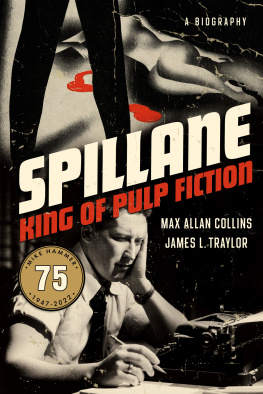
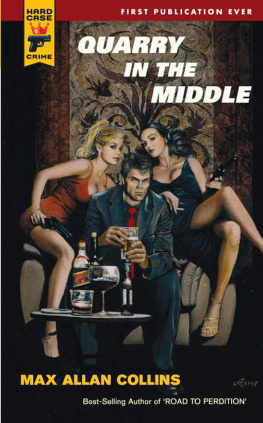


![Maks Kollinz - Dying in the Post-War World [novella]](/uploads/posts/book/911250/thumbs/maks-kollinz-dying-in-the-post-war-world-novella.jpg)
